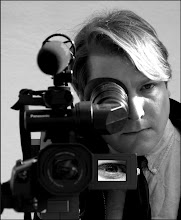

MUNCACHEVO--I filmed some surgeries in Ukraine for the first time since Hospital Regional de Occidente in Santa Rosa de Copan, Honduras a few years ago. I remember when I first filmed and photographed surgery, back at that hospital in 2000, I was very excited and enjoyed the experience very much. It was, and it still is, a great privilege, to watch and to document many talented and dedicated physicians at work. In this case it was Ukrainian orthopedic surgeon Dr. Yuri Demjan. And it brought to mind watching many procedures in Honduras, most memorably those with the brilliant reconstructive work of Columbus, Ohio plastic surgeon Dr. Les Mohler and anesthesiologist Dr. Paul Potter.
But there is somewhat of a limit to enjoying surgery, at least when one isn't actually doing it (and that I wouldn't know although I have always taken great pride in my splinter-removal technique). After a while, at least to the camera, the most fascinating surgery becomes a bunch of masked people, intently clustered around a big blue or green sheet, digging in a small, bloody square of flesh. And pretty much that's it. Often for hours on end. And the next case, no matter how interesting, looks pretty much the same while it's going on. The truly fascinating parts are before and after. Meeting the people, both the doctors and the patients who are about to go under he knife. And then afterwards, seeing them or their relatives and how this procedure has changed their lives.
And that is the true pleasure. Of seeing how the doctors of groups like SARA or CAMO have changed lives by fixing a spine or a cleft lip or any number of other procedures. Of how, most importantly, they have helped train local doctors to keep doing the work day in and day out.



2 comments:
I hesitate to tell you that to someone who has seen health care in the third world surgeries may look all the same, but really they aren't... as I looked at this picture I wanted to know what the surgical tray looked like, I wondered if there even is one, what were the procedures for maintaining sterile environments, what did the staff do to prep, what did the floor look like, where was the autoclave, did they recycle things we would never dream of recycling in the "modern" medical world.
But, you are right, the people involved are the most interesting part.
Ah Blair, your eye is keen as always and comments valid. Soon, I will be writing on a lot of those issues and posting additional photos of the surgery. But in short, while the surgical theatre was better than the one I was mostly in in Honduras it was far from ideal. The connecting room was open at times to the outdoors and that room open to the surgery. There was a surgical tray and the surgeons scrubbed up well with nurse assistance to begin with. I am not sure where the autoclave was but you guess correctly on the recycling. All the plates and steel bits and everything put into the patients had been used before.
Post a Comment